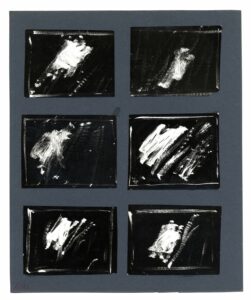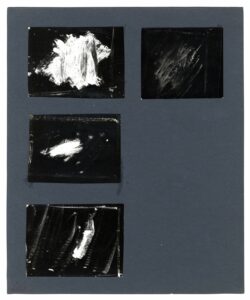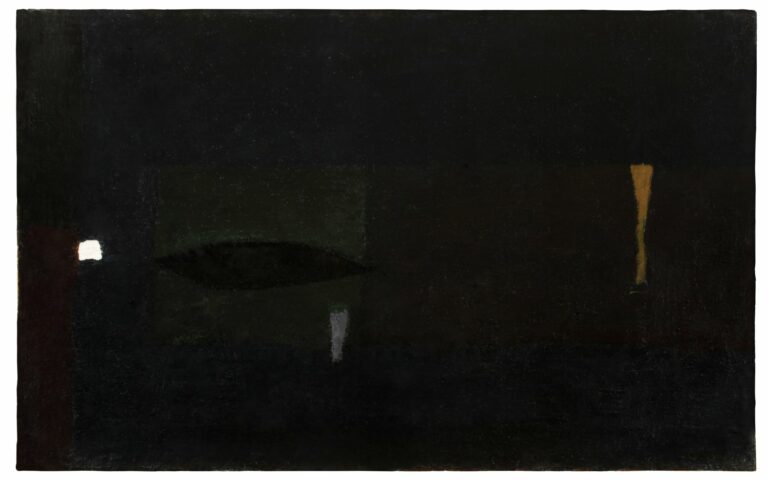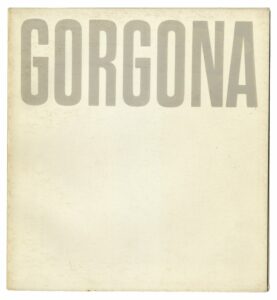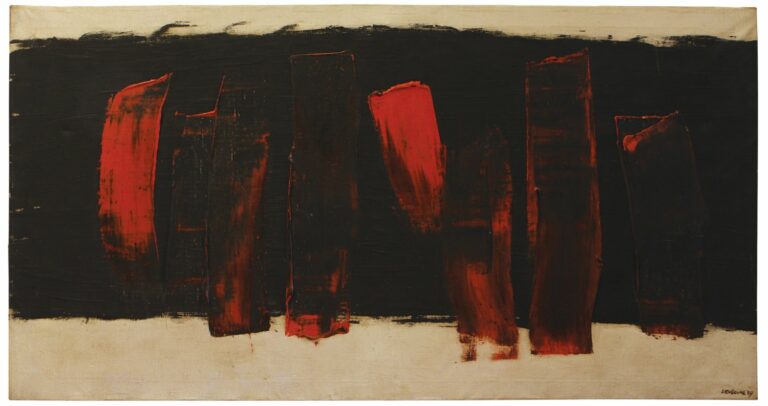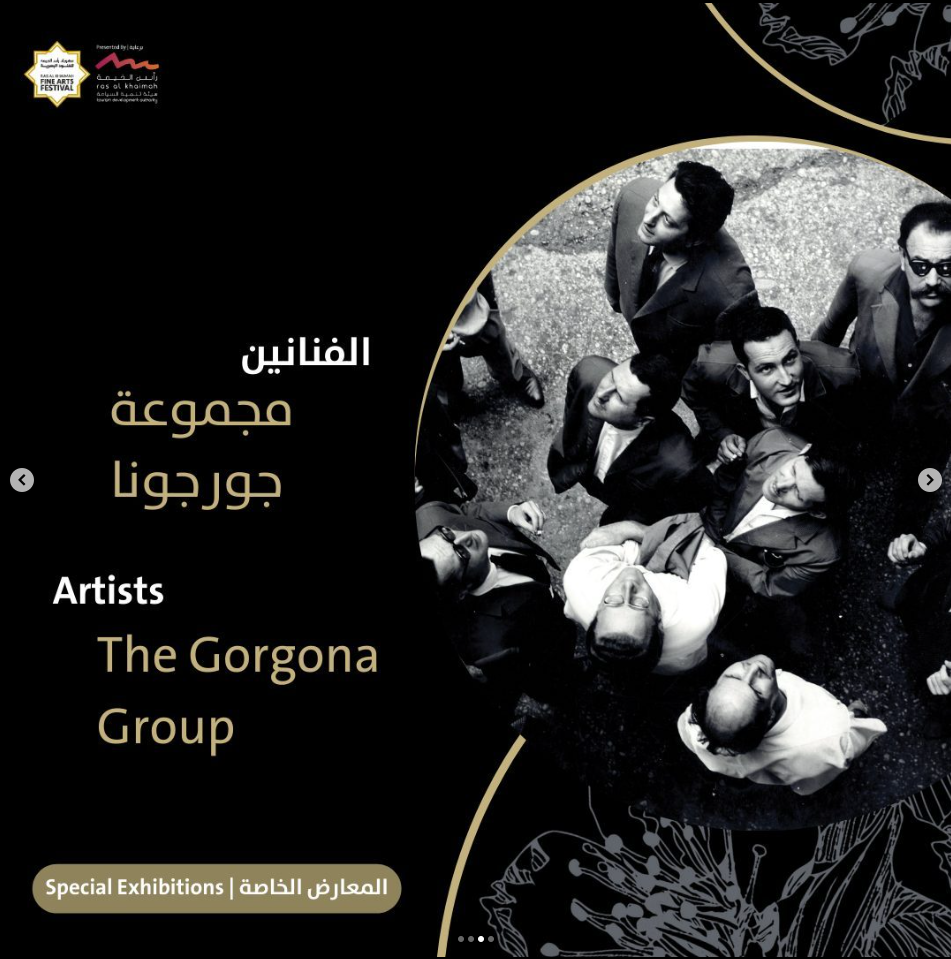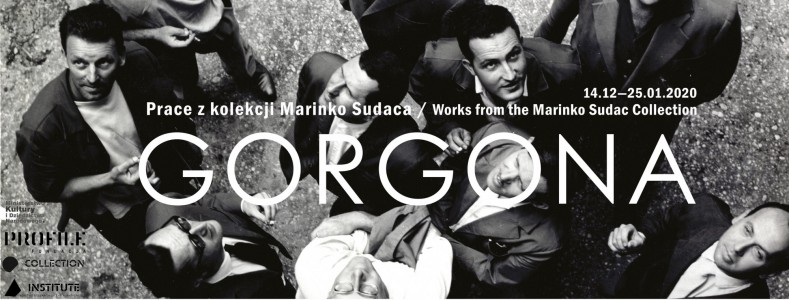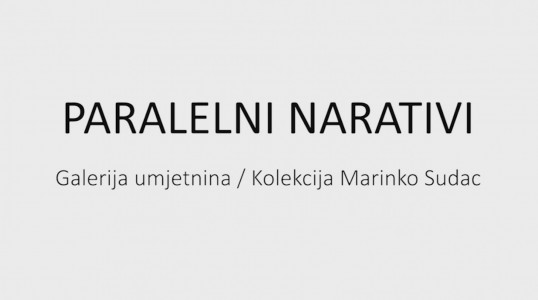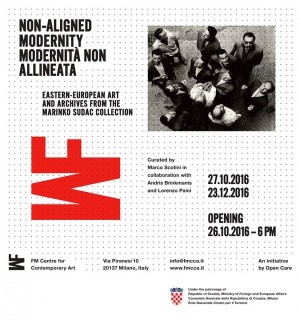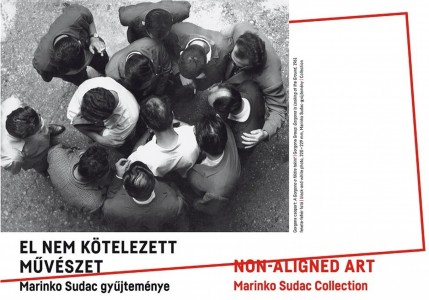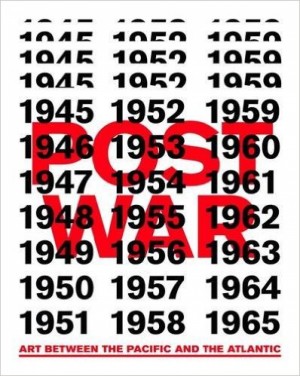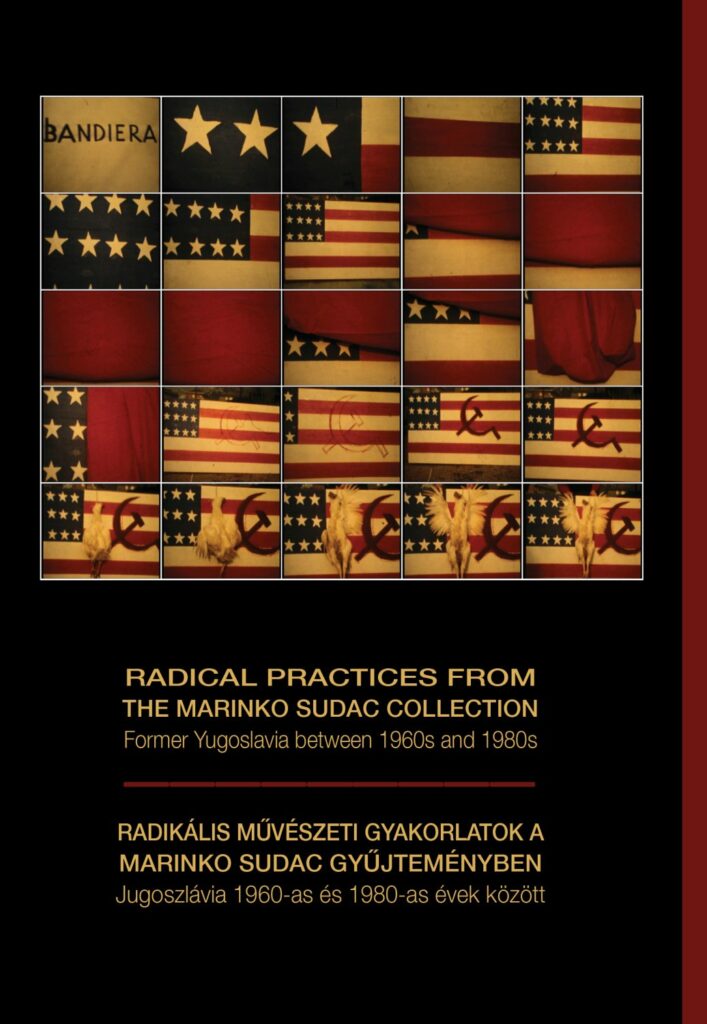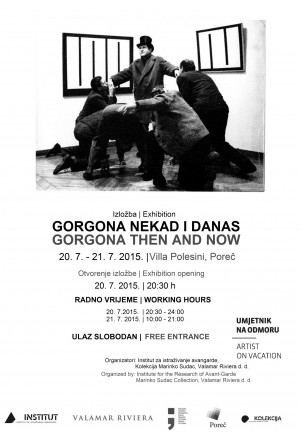MARIJAN JEVŠOVAR
1922. – 1998., Zagreb
RADOVI
Biografija
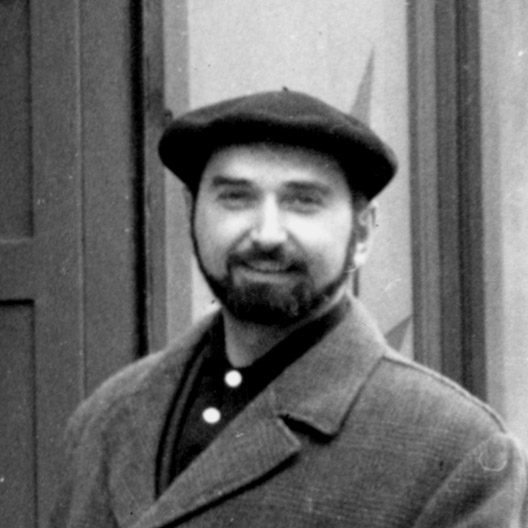
Ex Jugoslavija
1946-1968
Marijan Jevšovar bio je hrvatski slikar i član protokonceptualne grupe Gorgona (1959. – 1966./1968.).
Diplomirao je slikarstvo na Akademiji likovnih umjetnosti u Zagrebu 1946. Grafičkim dizajnom počeo se baviti 1939. g. Od 1954. do 1956. u nekoliko je navrata boravio u Parizu.
Bio je jedan od članova protokonceptualne grupe Gorgona (1959. – 1966./1968.), koju su činili i umjetnici Josip Vaništa, Julije Knifer, Ivan Kožarić, Đuro Seder, Miljenko Horvat, te povjesničari i teoretičari umjetnosti Radoslav Putar, Dimitrije Bašičević-Mangelos i Matko Meštrović. Unutar grupe angažirao se u svim konceptualnim izrazima djelovanja Gorgone: umjetnost kao ideja, umjetnost kao koncept, sudjelovao je na sastancima grupe, uključujući Ankete, 1961. – 1968., te drugim aktivnostima grupe, kao npr. Adoracija, 1966., akcija, Sat reakracije, 1962., i u drugim kolektivnim radovima grupe. Autor je antičasopisa Gorgona br. 3, 1961, te izradio nekoliko prijedloga koji su ostali nerealizirani.
Njegovo slikarstvo sastoji se od svođenja registra na akromatske boje, čime postiže monokromne plohe u duhu enformela, plohe kontemplativnog karaktera pod utjecajem filozofije zen budizma, egzistencijalizma i apsurda. Nije bitan rezultat nego misaoni proces, gesta i potez. Slikarstvo je, po Jevšovarovim riječima, “negacija forme i prljanje bijele površine” platna ili papira. U razdoblju Gorgone najznačajnija slika iz njegova opusa je Siva površina, 1960. – 1962., koju je slikao tijekom dvije godine monotonim postupkom nanošenja i struganja sloja sive boje. Iz istog je razdoblja i njegova serija Savršeni crteži, 1965.
Od 1971., a osobito od 1976. do 1979., proširuje koloristički registar i približava se primarnom i analitičkom slikarstvu (Bijelo-zeleno istraživanje, 1977.; Potez, 1978.). S Josipom Vaništom koautor je biltena Postgorgona (1985. – 2010.) i P. S. Post scriptum (1989. – 1991.).
Projekti u kojima su izlagani radovi
umjetnički utjecaji
MARIJAN JEVŠOVAR utjecao je na:
Ex Jugoslavija
1946-1968
Ex Jugoslavija
1946-1968
Na MARIJAN JEVŠOVAR utjecali su:
Ex Jugoslavija
1946-1968
Ex Jugoslavija
1946-1968
ESEJ O AUTORU
POPIS IZLOŽBI
2017
Marijan Jevšovar, Crteži, 3.14 Gallery, Zagreb
2013
Petnaest godina poslije, Forum Gallery, Zagreb
2008
Marijan Jevšovar, Kranjčar Gallery, Zagreb
2007
Marijan Jevšovar 1922. – 1988., 11 Gallery, Zagreb
1998
Marijan Jevšovar, Forum Gallery, Zagreb
1995
Dijalog s četverokutom, Beck Gallery, Zagreb
Crteži Marijana Jevšovara, Keleia Gallery, Celje
Marijan Jevšovar, Gripe Fortress, Split
1993
Marijan Jevšovar – Crteži, Museum of Contemporary Art, Zagreb
1992
Susret na svjetlu, Dante Gallery, Umag
1990
Marijan Jevšovar, Drvenik
Marijan Jevšovar, Sebastian Gallery, Varaždin
1989
Gorgona “…Jevsovar, Knifer,..”, Art Plus Universite, FRAC Bourgogne, Dijon
Marijan Jevšovar, Toč Gallery, Selce
1985
Window of the bus-tram turnaround Črnomerec, Zagreb
1980
Marijan Jevšovar. Slikanje, Gallery of Contemporary Art, Zagreb
1976
Retrospektiva, Nova Gallery, Zagreb
1972
Marijan Jevšovar – filmski plakati, Museum of Arts and Crafts, Zagreb
1961
Jevšovar, Studio G, Zagreb
1959
Jevšovar — izložba slikarskih radova, Small Gallery, Opatija
GRUPNE IZLOŽBE:
2019
GORGONA 1959–1968. Független művészeti törekvések Zágrábban. Retrospektív kiállítás a Marinko Sudac gyűjteményből, Kassák Múzeum, Budapest
Radoslav Putar i Miljenko Horvat. Retrospektiva, Varaždin City Museum, Varaždin
GORGONA. Prace z kolekcji Marinko Sudaca, Profile Foundation, Warsaw
2018
In Memoriam – Josip Vaništa, Šira Gallery, Zagreb
Hello World. Revision einer Sammlung, Hamburger Bahnhof – Museum für Gegenwart, Berlin
Upute za gledanje – Što bi tijelo htjelo?, Museum of Modern and Contemporary Art, Rijeka
2017
El nem kötelezett művészet – Marinko Sudac gyűjteménye, Ludwig Múzeum — Kortárs Művészeti Múzeum, Budapest
Gorgona, Kunstmuseum Liechtenstein, Vaduz
2016
Modernità Non Allineata. Arte e Archivi dell’Est Europa dalla Collezione Marinko Sudac, FM Centre for Contemporary Art, Milan
2015
Transmissions: Art in Eastern Europe and Latin America, 1960 – 1980, Museum of Modern Art, New York
Gorgona, Museum of Contemporary Art, Zagreb
Radikális művészeti gyakorlatok a Marinko Sudac Gyűjteményben, A38 Kiállítóhely, Budapest
2012
John Cage — The Freedom of Sound, Ludwig Múzeum — Kortárs Művészeti Múzeum, Budapest
Apstrakcija – Modernizam i suvremenost, Klovićevi dvori Gallery, Zagreb
2007
Gorgona iz Kolekcije Macura, Museum of Contemporary Art, Belgrade
2004
Čudovišno, Art Pavilion, Zagreb
2003
Monokromije, Art Pavilion, Zagreb
2001
Informel, Prsten Gallery; Karas Gallery, Zagreb
1997
Gorgona, Gorgonesco, Gorgonico, Venice Biennale, Ex Macello, Dolo
1996
Contemporary Croatian Drawing, Workers’ Cultural Palace, Beijing
125 vrhunskih djela hrvatske umjetnosti, Home of HDLU, Zagreb
1995
Contemporary Art of the Non-aligned countries. Unity in Diversity in International Art, Museum Nasional, Jakarta
1994
Racionalno i spontano – geometrijska apstrakcija i informel od 1950. do 1970. godine u Hrvatskoj, Modern Gallery, Rijeka
1993
The Horse who Sings — Radical Art from Croatia, Museum of Contemporary Art, Sydney
1992
Naznake, Museum of Contemporary Art, Zagreb
Celjski mednarodni slikarski tedni, Celje
1989
Šesti beogradski trijenale jugoslovenske likovne umetnosti, Belgrade Fair, Belgrade
Jugoslovenska documenta 87, Skenderija Olympic Centre, Sarajevo
70 godina filmskog plakata u Hrvatskoj, JAZU Cabinet of Graphics, Zagreb
1987
Slika prirode i nova priroda slike, Karas Gallery, Zagreb
Jugoslovenska documenta 87, Skenderija Olympic Centre, Collegium Artisticum, Sarajevo
1986
Jevšovar, Knifer, Kožarić, Seder, Vaništa, Students’ Cultural Centre Gallery, Belgrade
1985
Pet umjetnika iz Zagreba (Marijan Jevšovar, Julije Knifer, Ivan Kožarić, Đuro Seder, Josip Vaništa), Gallery of Fine Arts, Osijek
1984
Papir kao površina i materijal likovnog izraza, Karas Gallery, Zagreb
1982
Inovacije u hrvatskoj umjetnosti sedamdesetih godina, Gallery of Contemporary Art, Zagreb
Primjeri primarnog i analitičkog slikarstva u Jugoslaviji 1974. – 1980., Gallery of Contemporary Art, Zagreb
1981
Apstraktne tendencije u Hrvatskoj 1951. – 1961., Modern Gallery, Zagreb
Lik-figura u novijem hrvatskom slikarstvu, Gallery of Fine Arts, Osijek
XVI Bienal de São Paulo, Pavilhao Armando Arruda Pereira, Parque Ibirapuera, São Paulo
1980
Jugoslovensko slikarstvo šeste decenije, Museum of Contemporary Art, Belgrade
Nove pojave u hrvatskom slikarstvu, Nova Gallery, Zagreb
1979
Mrtva priroda u novijem hrvatskom slikarstvu, Gallery of Fine Arts, Osijek
1978
13. Zagrebački salon, Art Pavilion, Zagreb
1977
Informel 1956–1962., Nova Gallery, Zagreb
Aktualnosti u hrvatskoj likovnoj umetnosti, “Cvijeta Zuzorić” Art Pavilion, Belgrade
Gorgona, Gallery of Contemporary Art, Zagreb; Students’ Cultural Centre Gallery, Belgrade; Städtisches Museum Abteiberg, Mönchengladbach
Aktualnosti u hrvatskoj likovnoj umjetnosti, Karas Gallery, Zagreb; “Cvijeta Zuzorić” Art Pavilion, Belgrade
12. Zagrebački salon, Art Pavilion; Modern Gallery; Centre for Culture and Information, Zagreb
Moderne Kunst in Kroatien, Rathaus, Mainz
1975
9. Zagrebački salon, Art Pavilion; Modern Gallery, Zagreb
1974
Likovne teme danas, Art Pavilion, Zagreb
Hrvatska likovna umjetnost 1945. – 1955.: tendenciozni realizam, Art Pavilion, Zagreb
1973
8. Zagrebački salon, Art Pavilion; Modern Gallery, Zagreb
1972
100 plakata iz Jugoslavije, Gallery of Contemporary Art, Zagreb
7. plavi salon, Modern Gallery of the National Museum, Zadar
1971
6. Zagrebački salon, Art Pavilion, Zagreb
Situacija 70/71, Modern Gallery, Zagreb
1968
3. Zagrebački salon, Art Pavilion, Zagreb
1967
EXPO 67, World’s Fair, Montreal
1963
Panorama decenija hrvatskog slikarstva 1952. – 1962., Students’ Centre Gallery, Zagreb
Salon 63, Gallery of Fine Arts, Rijeka; Galleria Communale, Firenca
1962
Quattro pittori Jugoslavi (I. Gattin, M. Jevšovar, R. Sablić, Đ. Seder), Galleria Cadario, Milan
Kolektivna izložba, Studio G, Zagreb
1961
I. trijenale likovnih umetnosti, Belgrade Fair, Belgrade
Salon 61, Modern Gallery, Rijeka
Slikarstvo skulptura 61, Gallery of Contemporary Art, Zagreb
Kolektivna izložba, Studio G, Zagreb
1960
Jugoslawische Künstler der Gegenwart: Malerei und Plastik, Kunstverein, Tübingen
Neue Malerei aus Jugoslawien, Galeria Deutscher Bücherbund, München
Ivo Gattin – Marijan Jevšovar – Mića Popović – Rudolf Sabljić, Galerie Deutscher Bücherbund, München
1959
Suvremena jugoslavenska grafika, House of JNA Exhibition Salon, Banja Luka
1956
Salon 56, Gallery of Fine Arts, Rijeka
Izložba ULUH-a, Art Pavilion Mali Kalemegdan, Belgrade
Izložba hrvatske grafike, Grafički kolektiv Galelry, Belgrade
1950
Izložba ULUH-a, Museum of Modern Art Dubrovnik, Dubrovnik; Art Pavilion, Zagreb
1947
Izložba studenta Umjetničke

